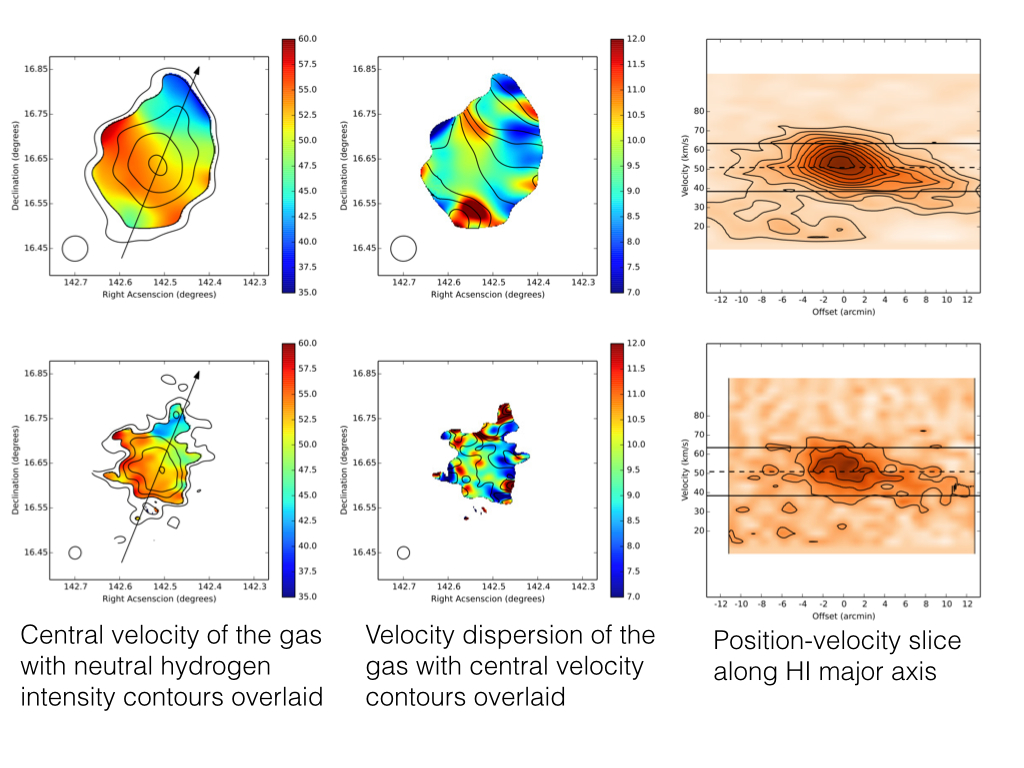Daily Image
19-12-2014AGC198606: A gas-bearing dark matter minihalo?
| Submitter: | Betsey Adams |
| Description: | Our model of cosmology, including dark matter and dark energy, does a good job at explaining large scale structure in the Universe but predicts many more small structures than we observe dwarf galaxies. These small structures may exist but as dark matter only (no stars or gas to observe) as they don't have enough mass to keep their gas and form stars. We want to study the smallest galaxies that have formed to understand what processes are important in these low-mass systems. In order to find some of these smallest galaxies, we identified isolated neutral hydrogen (HI) clouds with no optical counterpart from ALFALFA, a survey of neutral hydrogen in the nearby Universe using the Arecibo radio telescope. These clouds are good candidates to represent dark matter halos containing gas but (nearly) no stars within our own Local Group of galaxies. We recently published follow-up observations with the Westerbork Synthesis Radio Telescope (WSRT) of one very intriguing cloud, known as AGC198606. This cloud is of particular note as it is located nearby another very small, gas-rich galaxy, Leo T, and has similar HI properties as measured in ALFALFA. The WSRT observations allow the neutral hydrogen to be imaged in more detail and show that that the gas is distributed smoothly and has an ordered motion of ~25 km/s aligned with the major axis of the system. Deep optical images with the WIYN telescope at Kitt Peak reveal no stars associated with this cloud. Without any stars, we don't know the distance to AGC198606. Is it physically associated with Leo T at a distance of 420 kpc? Is it at a closer distance of 150 kpc that theoretical models might suggest? Or is it very nearby and a cloud of gas that is part of our own Galaxy? We can't say for sure, but the distribution of HI and ordered velocity motion suggests AGC198606 might be a dark matter halo containg gas and (nearly) no stars. If AGC198606 is at the distance of Leo T it has a neutral hydrogen mass of 620,000 solar masses, a radius of 1.4 kpc, and a total mass (including dark matter) within the HI extent of 150,000,000 solar masses. These results have been presented by E. A. K. Adams, Y. Faerman, W. F. Janesh, S. Janowiecki, T. A. Oosterloo, K. L. Rhode, R. Giovanelli, M. P. Haynes, J. J. Salzer, A. Sternberg, J. M. Cannon, and R. R. Munoz in a paper now accepted for publication in A&A and available at http://arxiv.org/abs/1412.0286. |
| Copyright: | Betsey Adams |
| Tweet |  |
